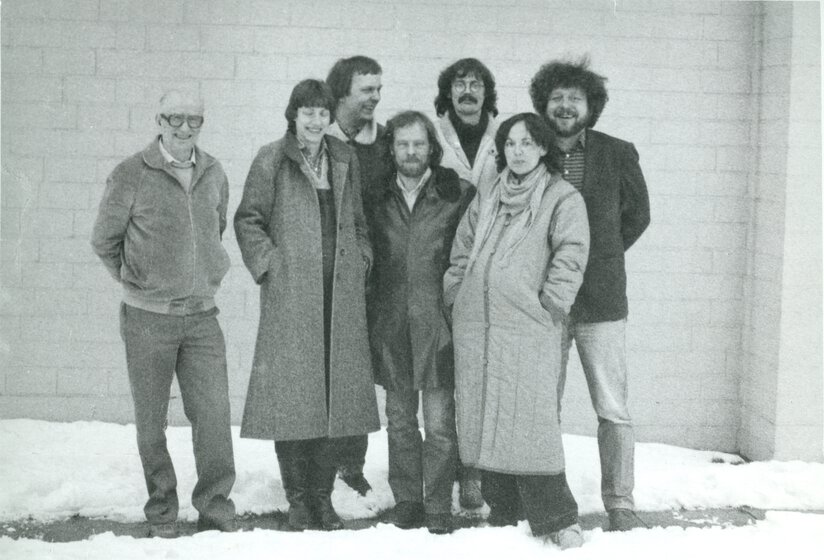History of the memorial
Breitenau Memorial is celebrating its 40th anniversary in September 2024. Its foundation in the 1980s marks a profound change in remembrance culture in Germany. After decades of silence around Nazi crimes, more and more people began inquiring into this history starting in the late 1970s. They began asking questions about Nazi history in their neighbourhoods and rediscovered crime sites as well as "forgotten" groups of persecuted peoples: "Dig where you stand" (Sven Lindqvist) became the motto of those motivated to uncover this history.
It was during this pivotal moment of cultural change that the city of Kassel began promoting a research project on Kassel during National Socialism. At the time, the project was affiliated with the still young University of Kassel (Gesamthochschule Kassel at the time) and headed by Professor of Educational Science Dietfrid Krause-Vilmar, Professor of Political Science Jörg Kammler and Professor of History Didactics Wilhelm Frenz. Following a lead from Max Mayr, a man who had been persecuted by the Nazis, the researchers learned that many files from the state welfare home (Landesarbeitsanstalt) were still located in the basement of the former administration building of Breitenau. When Dietfrid Krause-Vilmar viewed the files on site together with Reinhold Nolle, he immediately understood their importance: The admission records, administrative documents and thousands of Gestapo files showed that two work camps existed in Breitenau between 1933 and 1945: an early concentration camp and a work education camp (Arbeitserziehunglager). The project group "Breitenau" gradually uncovered further details and created a travelling exhibition, which was first shown in the historic tithe barn on the former monastery site of Breitenau in 1982.
With the support of the state welfare association Landeswohlfahrtsverband Hessen (LWV) and the Gesamthochschule Kassel, the project group was able to continue its work. In 1984, it moved into the tithe barn permanently as Breitenau Memorial. The project group thus became a designated contact for former prisoners of the concentration camp and work education camp. During the 2000s, it supported former foreign forced workers in applying for compensation. Such compensation only became possible for these persons after the establishment of the foundation for remembrance, responsibility, and future (Stiftung Erinnerung, Verantwortung, Zukunft) in 2000. The year 2012 became a milestone in the history of the memorial. Within the context of documenta 13, artists developed positions on Breitenau. Among these artists was also long-standing Memorial Director Dr. Gunnar Richter, who at documenta presented his thesis from the year 1980 consisting of a sound and slide show on the end-phase crimes committed at the Fuldaberg.
